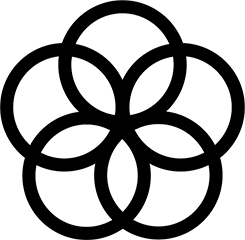UN Sustainable Development Goals Addressed
-

Goal 3: Good Health & Wellbeing
-

Goal 8: Decent Work and Economic Growth
-

Goal 11: Sustainable Cities & Communities
-

Goal 17: Partnerships for the Goals
2020 Global Design Challenge Finalist
This design concept was developed by participants in the Institute’s Global Design Challenge. The descriptions below are from the team’s competition entry materials.
Location: Utrecht, Netherlands
Team members: Nina Vodnjov, Ivan Bigot, Hida Parsay, Marit Bosman, Ashutosh Sinha
Innovation Details
Mimicking the slender shape of floral stamens along with the electrical and structural properties of a spiderweb, Pranavayu is an air filtration system designed to improve the health and livelihoods of rickshaw drivers in Delhi, India. This filter’s electrostatically charged metal meshes are designed to optimize the capture of pollutants, allowing the driver to breathe clean air.
What is the problem you are trying to solve and how is it related to the united nations sustainable development goals?
Air pollution is a serious problem around the world and is often at its worst in developing countries such as India. 21 out of the 30 most polluted cities in the world, for example, are in India. While most forms of transport offer some form of protection, the most vulnerable public transport workers are India’s Rickshaw drivers, particularly those in India’s capital city-Delhi. According to some scientists, breathing in Delhi is equivalent to 50 cigarettes a day. In 2016 a study was published showing that more than 140 million of India’s inhabitants breathe air that is 10 times worse than the World Health Organization limit. Intermediate solutions such as masks prove to be inefficient owing to their poor reusability and the fact that during smog season, the dark thick smog on the streets also irritates the eyes and skin. So the need arose for a stable, affordable and sustainable solution to the drivers’ problems. Reducing the risk of respiratory, cardiac, and neurological pathologies to the driver helps meet the third sustainable development goal of ensuring Good Health and Well Being. Due to these dire working conditions, a lot of rickshaw drivers are forced to either work fewer hours or earn less money. Therefore our solution would also help us meet the eighth and tenth goals of Decent work and economic growth and Reduced Inequalities. Our solution contributes to sustainable public transportation in cities, further helping meet the eleventh goal of sustainable cities and communities. With our plan to collaborate with other companies such as Air Ink that work with these air pollutants, we also meet the final goal of a partnership for the above goals.
What organisms/natural systems did you learn from and how did what you learned inform your design?
Air filtration is a common phenomenon and is well developed throughout the whole living world. Organisms use multiple strategies that can be regrouped in patterns. Drawing inspiration from various such organisms, our design and prototype evolved. Initially, our prototype was informed by the ability of hair to capture pollutants in organisms such as Calanoid copepods and also in camel eyelashes. We also incorporated the ability of gills and scales in fish to direct fluid motion, which was the flow of air into our driver’s cabin at this point. We decided to utilise these gill-like structures to direct airflow toward bristles with hair (possibly with an additional semi-solid substance to act as mucus in the nose). To ensure the removal of the smallest particles, we drew inspiration from the electrostatic attraction of pollen grains onto flower stamens and insect legs. For wind-pollinated plants, a high electrostatic charge at the tip of the stamen helps to attract the pollen grains to its apex. From here, the pollen grains are transported to the ovary. Similarly, in insect-pollinated plants, the slender legs of these insects maximize the electrostatic charge to attract pollen grains. This would require pointy structures, preferably on an electrically charged mesh to ensure the removal of every last irritant. However, deeming the bristles to be unsustainable owing to their poor reusability, we decided to simply repeat patterns we knew to be successful, namely the electrostatic attraction of the pollutants. We, therefore, relied on a multi-layered system consisting of the charged meshes with protruding needle-like structures to ensure a high charge at the apex and efficiently filter the air.
What does your design solution do? How does it address the problem or opportunity you selected?
In a nutshell, our design helps the rickshaw driver breathe clean, non-toxic air. We isolate the driver in his cabin and regulate the flow of air into and out of the cabin. The only way for air to enter the cabin is through our filter system. We ensure a unidirectional flow of air by placing two flaps in the part that isolates the driver from the passengers, that open outward. The air that enters through the filter system is rid of its pollutants by electrostatic attraction to the charged meshes. Unlike standard electrostatic chimneys, since our system is perpetually in motion, we require a small voltage that can be applied by simply attaching it to the electronic fare meter. The needle- like projections maximize electrostatic charge at their apex, optimizing the capture of pollutants. Not only would our design directly benefit the driver by improving his quality of life and ability to earn, but in collaboration with partners such as AIR INK, we aim to recycle captured pollutants to create a circular economy.


